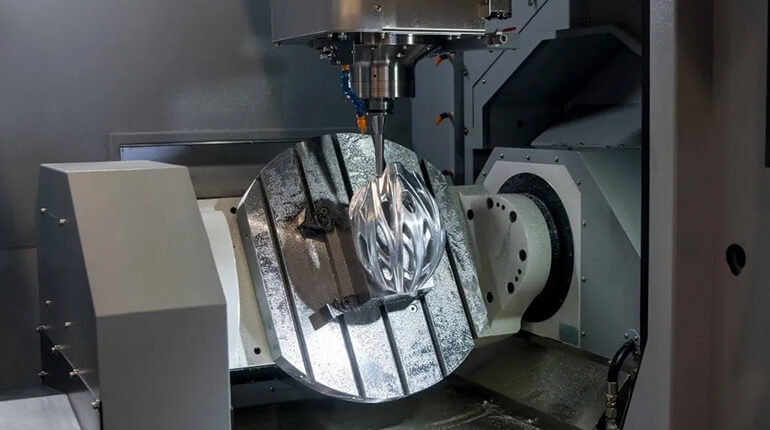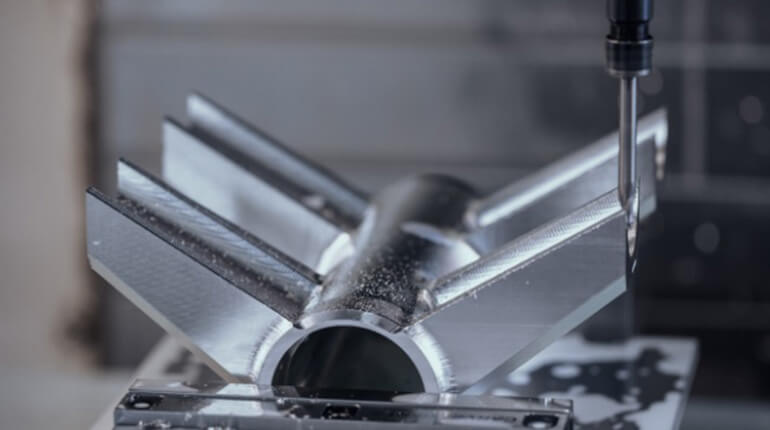
Choosing Tooling for CNC Machining Titanium
Titanium alloys challenge machinists with low thermal conductivity and high strength. I wrote this guide to help you select tooling that cuts costs and boosts efficiency.
In this post, I cover why titanium is tough, key selection factors, best materials, coatings, geometry, and specialized tools for milling, drilling, and tapping.
Why Is Titanium Machining Hard?

Titanium generates intense heat at the cutting zone. Its conductivity is only 7% of steel's, per ASM International data.
This heat softens tools quickly. Work hardening occurs, making surfaces harder mid-cut.
Gallium in titanium reacts with many tool materials. Chip evacuation is poor due to gummy chips.
Studies show tool life drops 50-70% versus steel, per Sandvik Coromant reports.
5 Key Tooling Selection Factors
I prioritize these factors for titanium success.
- Heat Resistance: Tools must withstand 1,000°C+ zones. Poor choice leads to rapid wear.
- Wear Resistance: Titanium's abrasiveness demands hardness above 90 HRA.
- Rigidity: Vibration causes chatter; rigid setups extend life by 30%, per Kennametal tests.
- Chip Control: Proper flutes prevent re-cutting, reducing power draw 20%.
- Cost vs. Performance: Premium tools cut cycle time 40%, justifying expense, per Seco Tools data.
Best Tool Materials for Titanium

Carbide: The Industry Standard
I recommend solid carbide or carbide-tipped tools. They offer 3-5x life over HSS in titanium, per OSG data.
Micrograin carbide grades like K10-K20 resist chipping. ISO tests show 200-300 m/min speeds possible.
Why Avoid Hss and Ceramics?
HSS melts above 600°C; titanium hits 1,200°C locally. Life is 1/10th of carbide.
Ceramics fracture under titanium's elasticity. They suit cast iron, not reactive metals like Ti.
Essential Tool Coatings (Tialn vs. Ticn)
TiAlN excels in titanium. It forms aluminum oxide barrier, boosting life 4x, per Balzers studies.
TiCN suits lower speeds but wears faster in heat. Use TiAlN for roughing; AlTiN variants for finishing.
Multi-layer coatings reduce friction 15-20%, per Guhring research.
Optimizing Tool Geometry
Sharp Edges and Flute Count
I use positive rake angles of 10-15°. They shear cleanly, cutting forces 25%.
For milling, 3-4 flutes balance chip load. Fewer flutes aid evacuation in slots.
Variable Helix for Chatter Reduction
Variable helix (35°/38°) disrupts harmonics. It cuts vibration 50%, per Niagara Cutter tests.
This allows 20% higher feeds without instability.
Tooling for Titanium Milling (Hem)
High-Efficiency Milling (HEM) uses shallow radial depths (5-10% diameter). It extends life 3x.
Trochoidal paths with variable helix end mills work best. Speeds: 100-150 SFM, feeds 0.002-0.005 IPT.
Data from Mastercam shows 60% cycle time reduction.
Tooling for Drilling Titanium
Use carbide drills with 140° point angles. Through-coolant is essential; it boosts life 2x.
Peck cycles every 0.5x diameter prevent chip packing. Speeds: 50-80 SFM.
Indexable drills with coated inserts handle larger holes efficiently.
How to Select Taps for Titanium
Choose carbide or PM taps with TiCN coating. Spiral point for through holes; spiral flute for blind.
Form taps reduce torque 30% by displacing material. Lubricate with high-pressure coolant.
OSG recommends 10-20 SFM, 0.001-0.002 IPT per tooth.
Tool Holders: Your Rigidity Solution
Hydraulic or shrink-fit holders minimize runout (<0.0002"). They improve life 40%, per Haimer data.
BT or HSK tapers provide better grip than CAT. Balance to G2.5 at 20,000 RPM.
Standard Machining's Titanium Solutions
At Standard Machining, I lead teams delivering titanium parts with ±0.0005" tolerances. We stock premium carbide tooling and HEM strategies.
Our quick-turn CNC services ensure 1-2 week delivery. Contact us for custom titanium solutions.
Conclusion
Select carbide tools with TiAlN, optimized geometry, and rigid holders. This cuts costs and improves quality.
For machining needs, partner with Standard Machining. Get a quote today.
Faqs
What Is the Best Coating for Titanium Tools?
TiAlN is top; it resists oxidation up to 800°C. Industry data from Oerlikon shows 300% life increase over uncoated.
Why Does Titanium Cause Tool Chatter?
Low modulus and heat buildup amplify vibrations. Variable helix tools reduce it by 50%, per expert tests.
Can I Use the Same Tools for Titanium and Aluminum?
No; titanium needs harder, coated carbide. Aluminum uses polished HSS or uncoated for gummy chips.
How Fast Should I Machine Titanium?
Rough at 100-200 SFM with carbide. Finish at 300+ SFM. Adjust based on alloy; Ti-6Al-4V data from Machining Doctor.
What Coolant Works Best for Titanium?
High-pressure emulsion (10% concentration). It cools and lubricates, extending life 2x per CIMCOOL studies.


